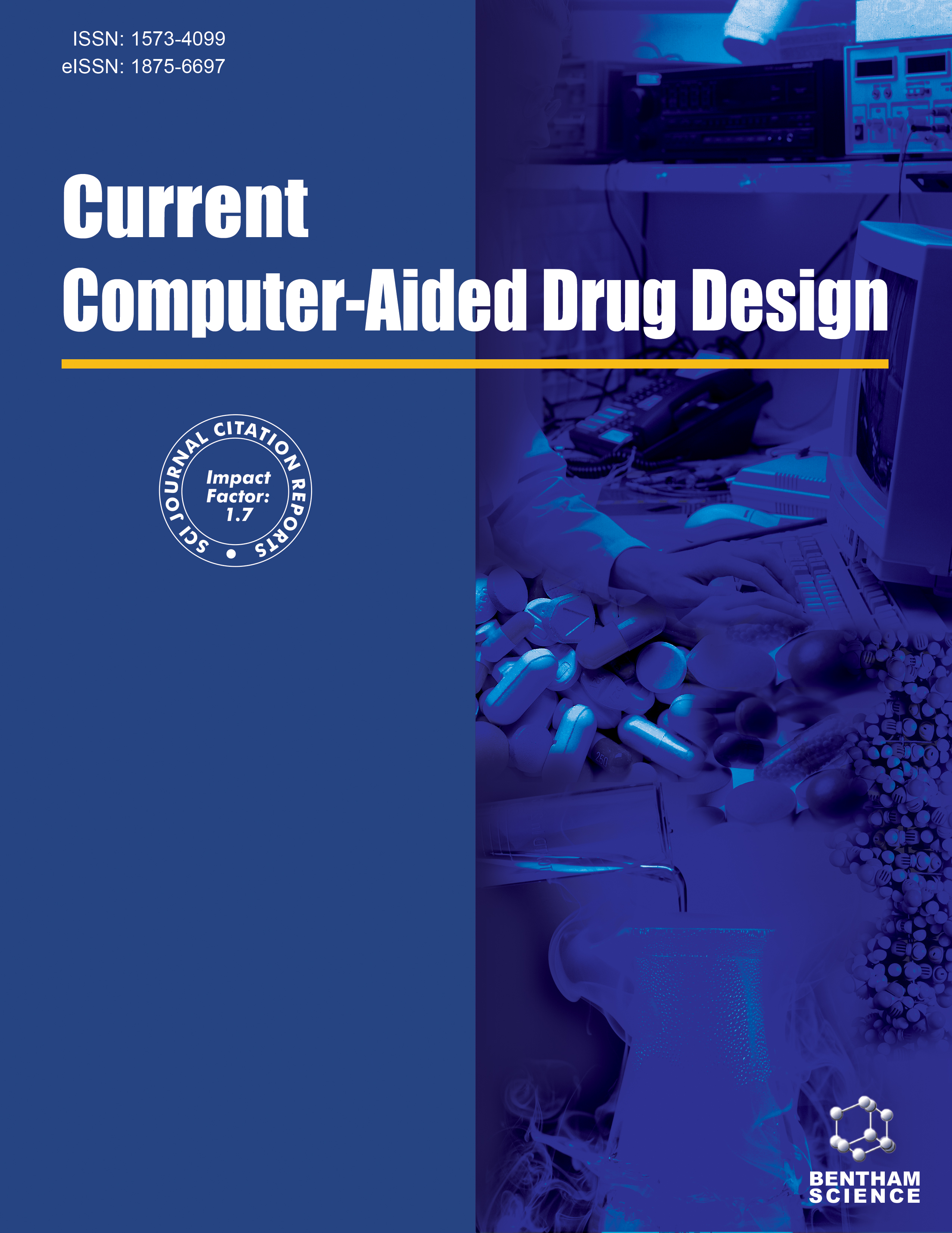Current Computer - Aided Drug Design - Current Issue
Volume 21, Issue 2, 2025
-
-
Integrated Bioinformatics Analysis and Target Drug Prediction of Inflammatory Bowel Disease Co-existent Diabetes Mellitus
More LessAuthors: Lili Yang, Ning Wang, Yutong Wang, Wen Li, Ziyang Kong, Bin Zhang and Yaoyao BianIntroductionInflammatory bowel disease (IBD) has become one of the public problems worldwide and its incidence rate is increasing year by year. Its concomitant disease i.e. diabetes mellitus (DM) has attracted more and more attention due to DM altering the progression of IBD and leading to long periods of intermittent recurrence and deterioration. The common mechanism and potential target drug of IBD with comorbid chro Read More
-
-
-
Identification of Potential Inhibitors of Three NDM Variants of Klebsiella Species from Natural Compounds: A Molecular Docking, Molecular Dynamics Simulation and MM-PBSA Study
More LessAuthors: Nakul Neog, Minakshi Puzari and Pankaj ChetiaBackgroundKlebsiella species have emerged as well-known opportunistic pathogens causing nosocomial infections with β-lactamase-mediated resistance as a prevalent antibiotic resistance mechanism. The discovery and emergence of metallo-β-lactamases, mainly new-Delhi metallo-β-lactamases (NDMs), have increased the threat and challenges in healthcare facilities.ObjectivesA computational screening was conducte Read More
-
-
-
Exploring the Molecular Mechanism by which Kaempferol Attenuates Sepsis-related Acute Respiratory Distress Syndrome Based on Network Pharmacology and Experimental Verification
More LessAuthors: Weichao Ding, Changbao Huang, Juan Chen, Wei Zhang, Mengmeng Wang, Xiaohang Ji, Shinan Nie and Zhaorui SunBackgroundSepsis-related acute respiratory distress syndrome (ARDS) is a fatal disease without effective therapy. Kaempferol is a flavonoid compound extracted from natural plant products; it exerts numerous pharmacological effects. Kaempferol attenuates sepsis-related ARDS; however, the underlying protective mechanism has not been elucidated completely.ObjectivesThis study aimed to use network pharmac Read More
-
-
-
3D-QSAR, Pharmacophore Modeling, ADMET and DFT Studies of Halogenated Conjugated Dienones as Potent MAO-B Inhibitors
More LessIntroductionIt has been reported that the extension of conjugation in chalcone scaffolds considerably enhanced the potency, selectivity, reversibility, and competitive mode of MAO-B inhibition. In this study, using the experimental results of IC50 values of fifteen halogenated conjugated dienone derivatives (MK1-MK15) against MAO-B, we developed a 3D-QSAR model.MethodsFurther, we created a 3D pharma Read More
-
-
-
Network Pharmacology, Molecular Docking and in vivo-based Analysis on the Effects of the MBZM-N-IBT for Arthritis
More LessIntroductionArthritis is the cause of morbidity associated with Chikungunya virus (CHIKV) infection. It persists even after the virus has been cleared from the body. MBZM-N-IBT was earlier shown to inhibit (CHIKV) infection in vitro and in vivo.ObjectivesThe objective of this study is to determine the ability of MBZM-N-IBT to manage arthritis independent of CHIKV infection.MethodsThe acute toxicity of MBZM-N-IBT was determined Read More
-
-
-
Design, Synthesis, Biological and in silico Evaluation of Novel Indazole-pyridine Hybrids for the Treatment of Breast Cancer
More LessAuthors: Ishan Panchal, Rati Kailash Prasad Tripathi, Mange Ram Yadav, Meet Valera and Kinjal ParmarIntroductionThe prevalence of breast cancer presents a substantial global health concern, underscoring the ongoing need for the development of inventive therapeutic remedies.MethodsIn this investigation, an array of novel indazole-pyridine hybrids (5a-h) have been designed and synthesized to assess their potential as candidates for treating breast cancer. Subsequently, we have conducted biological evaluations to determine Read More
-
-
-
Computational Exploration of Isatin Derivatives for InhA Inhibition in Tuberculosis: Molecular Docking, MD Simulations and ADMET Insights
More LessBackgroundAnti-tubercular drug discovery is a critical research area aimed at addressing the global health burden imposed by Mycobacterium tuberculosis. Nowadays, computational techniques have increased the likelihood of drug development compared to traditional, labor-intensive, and time-consuming drug design approaches. The pivotal goal of drug design is to identify compounds capable of selectively targeting protei Read More
-
Volumes & issues
-
Volume 21 (2025)
-
Volume 20 (2024)
-
Volume 19 (2023)
-
Volume 18 (2022)
-
Volume 17 (2021)
-
Volume 16 (2020)
-
Volume 15 (2019)
-
Volume 14 (2018)
-
Volume 13 (2017)
-
Volume 12 (2016)
-
Volume 11 (2015)
-
Volume 10 (2014)
-
Volume 9 (2013)
-
Volume 8 (2012)
-
Volume 7 (2011)
-
Volume 6 (2010)
-
Volume 5 (2009)
-
Volume 4 (2008)
-
Volume 3 (2007)
-
Volume 2 (2006)
-
Volume 1 (2005)
Most Read This Month Most Read RSS feed
Article
content/journals/cad
Journal
10
5
false
en


